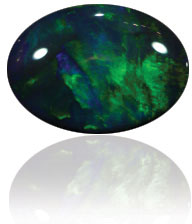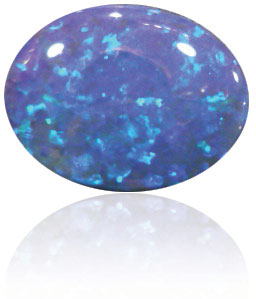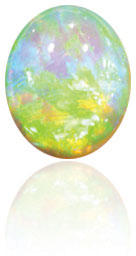0
Opal Guide
The Appearance & Characteristics Of Your Opal
The history of Australian Opal began millions of years ago, when parts of Australia were covered
by a vast inland sea where stone sediment was deposited along its shoreline.

When the water masses flooded back, they flushed water containing silica into the resulting
cavities and niches in the sedimentary rocks, where the remains of plants were also deposited.
Slowly the silica transformed into Opal. Basically, Opals are simply a combination of silica and
water.
Opalescence
One of the unique characteristics of the stone is its opalescence. The stone has a rainbow like
iridescence that changes according to the angle of observation.
The stone possesses the ability to reflect and refract particular wavelengths of light.
This play of color really makes opals come alive. There are some beautiful gemstones in the world
but the opal has the unique characteristic of being able to change colors as it is moved.
Opals Have A Dominant Colour
Opals usually have a dominant theme colour. Some stick to variations of that theme.

Others feature a dominant color such as red or green, but then offer multiples of other colours in
contrast such as yellow, pink and crimson.
The background darkness or lightness gives the different types of opal their distinct appearance.
Types Of Opal
Australian opals can come in many different varieties, such as black, white, boulder, crystal &
common opals.
The most expensive and prized variety are black opals. They contain streaks of fire on a dark body
colour.
The white opal is opaque meaning that the opal colour is on the surface of the stone rather
than being translucent. The fire opal originates from Mexico where only 5% of the world’s opals
originate.
It is usually orange, red or yellow in color but most fire opals do not have a change of colour.
Other Mexican opals do have a colour change similar to opals from Andamooka; these are
transparent and show brilliant flashes of colour.
Mythology Surrounding Opals
This delightful legend is said to be the birth of Opal, which can be traced to the ancient time of
the original Australian Aborigines.

It is reported in their legend that the creator came down to Earth on a rainbow, in order to bring
the message of peace to all humans.
At the very spot where his foot touched the ground, the stones came alive and started sparkling in
all the colours of the rainbow.
A massive 95% of the worlds Opals come from Australia.
Caring For Your Opal Jewellery
Opals are delicate, and have a Moh’s scale hardness of approximately 6.5. They need to be worn
and handled with great care. They have a water content which is typically between 3% and 20%.
If an opal is allowed to dry, it will crack or craze. In most cases, Opals should be stored separately
in a jewellery box and should be kept away from other gemstone rings which could cause
scratching.

Opals don’t mind being hot or cold, it is sudden temperature changes that can damage them.
Never store opals near a heat source. Keep them out of direct sunlight when they are not being
worn.
Always remove your Opal jewellery when doing any household chores, including gardening, as
you could know the Opal accidentally and damage the stone.
Don’t bathe or swim in Opals and never clean any opal in an ultrasonic cleaner. This will cause
cracking in a solid opal or and water damage to a doublet or triplet opal.
If you are unsure about how to care for your opal, or if you have any questions, call into one of
our showrooms for further advice.
About Whibleys
Whibleys The Jewellers is an independent family run business, with our origins in Gracechurch Street London in 1894.
Contact Information
34 Warwick St, Worthing, West Sussex
Tel: 01903 234360
